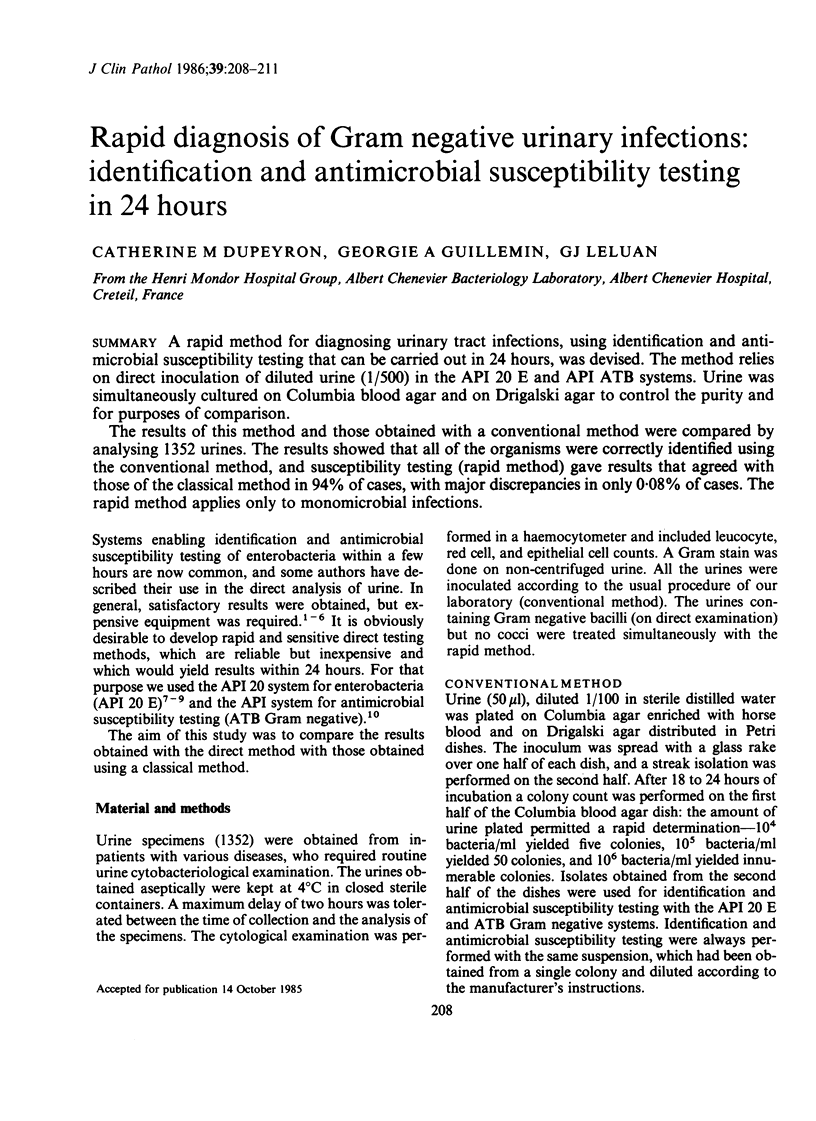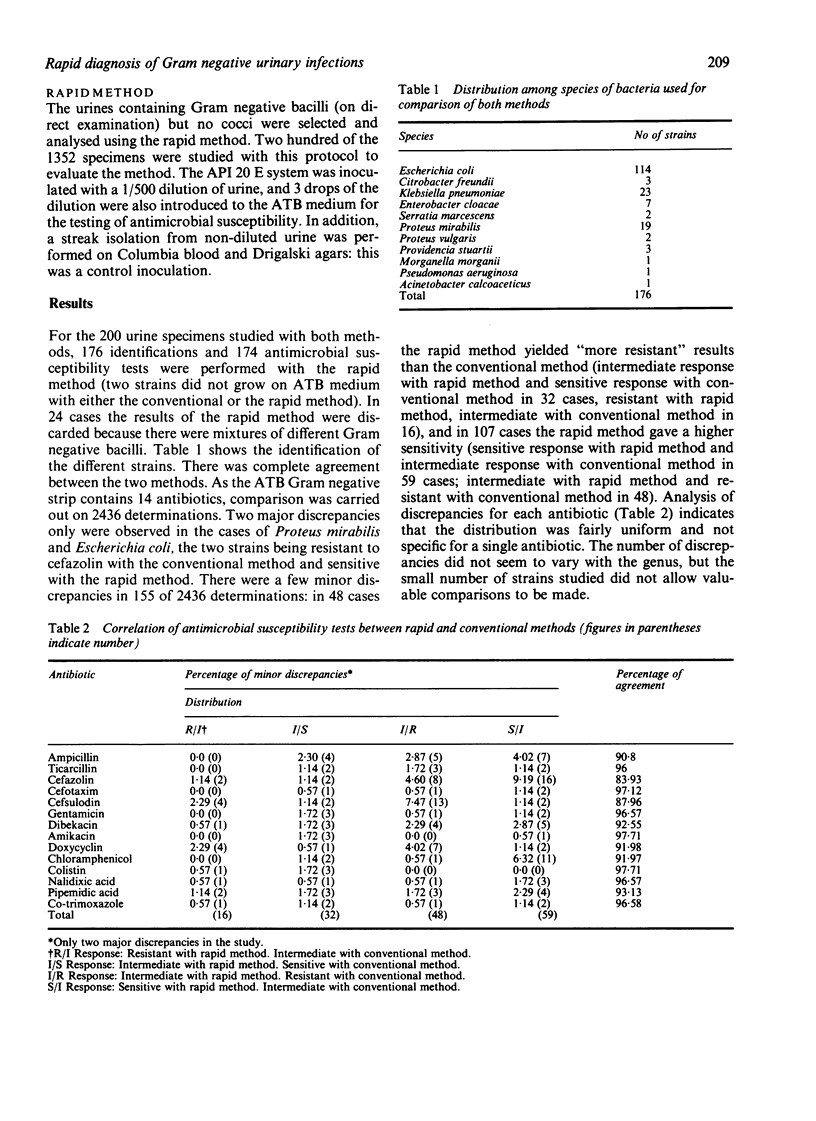Abstract
A rapid method for diagnosing urinary tract infections, using identification and antimicrobial susceptibility testing that can be carried out in 24 hours, was devised. The method relies on direct inoculation of diluted urine (1/500) in the API 20 E and API ATB systems. Urine was simultaneously cultured on Columbia blood agar and on Drigalski agar to control the purity and for purposes of comparison. The results of this method and those obtained with a conventional method were compared by analysing 1352 urines. The results showed that all of the organisms were correctly identified using the conventional method, and susceptibility testing (rapid method) gave results that agreed with those of the classical method in 94% of cases, with major discrepancies in only 0.08% of cases. The rapid method applies only to monomicrobial infections.
Full text
PDF



Selected References
These references are in PubMed. This may not be the complete list of references from this article.
- Aldridge K. E., Gardner B. B., Clark S. J., Matsen J. M. Comparison of micro-ID, API 20E, and conventional media systems in identification of Enterobacteriaceae. J Clin Microbiol. 1978 Jun;7(6):507–513. doi: 10.1128/jcm.7.6.507-513.1978. [DOI] [PMC free article] [PubMed] [Google Scholar]
- Heinze P. A., Thrupp L. D., Anselmo C. R. A rapid (4--6-hour) urine-culture system for direct identification and direct antimicrobial susceptibility testing. Am J Clin Pathol. 1979 Feb;71(2):177–183. doi: 10.1093/ajcp/71.2.177. [DOI] [PubMed] [Google Scholar]
- Holmes B., Willcox W. R., Lapage S. P. Identification of Enterobacteriaceae by the API 20E system. J Clin Pathol. 1978 Jan;31(1):22–30. doi: 10.1136/jcp.31.1.22. [DOI] [PMC free article] [PubMed] [Google Scholar]
- Jenkins R. D., Hale D. C., Matsen J. M. Rapid semiautomated screening and processing of urine specimens. J Clin Microbiol. 1980 Mar;11(3):220–225. doi: 10.1128/jcm.11.3.220-225.1980. [DOI] [PMC free article] [PubMed] [Google Scholar]
- Kelly M. T., Hale D. C., Matsen J. M. Rapid identification by the Micro-ID system of Enterobacteriaceae detected by urine screening. J Clin Microbiol. 1981 Sep;14(3):295–297. doi: 10.1128/jcm.14.3.295-297.1981. [DOI] [PMC free article] [PubMed] [Google Scholar]
- Lewis J. F., Alexander J. Microscopy of stained urine smears to determine the need for quantitative culture. J Clin Microbiol. 1976 Oct;4(4):372–374. doi: 10.1128/jcm.4.4.372-374.1976. [DOI] [PMC free article] [PubMed] [Google Scholar]
- Smith P. B., Tomfohrde K. M., Rhoden D. L., Balows A. API system: a multitube micromethod for identification of Enterobacteriaceae. Appl Microbiol. 1972 Sep;24(3):449–452. doi: 10.1128/am.24.3.449-452.1972. [DOI] [PMC free article] [PubMed] [Google Scholar]
- Tilton R. E., Tilton R. C. Automated direct antimicrobial susceptibility testing of microscopically screened urine cultures. J Clin Microbiol. 1980 Feb;11(2):157–161. doi: 10.1128/jcm.11.2.157-161.1980. [DOI] [PMC free article] [PubMed] [Google Scholar]
- Wadke M., McDonnell C., Ashton J. K. Rapid processing of urine specimens by urine screening and the AutoMicrobic system. J Clin Microbiol. 1982 Oct;16(4):668–672. doi: 10.1128/jcm.16.4.668-672.1982. [DOI] [PMC free article] [PubMed] [Google Scholar]


